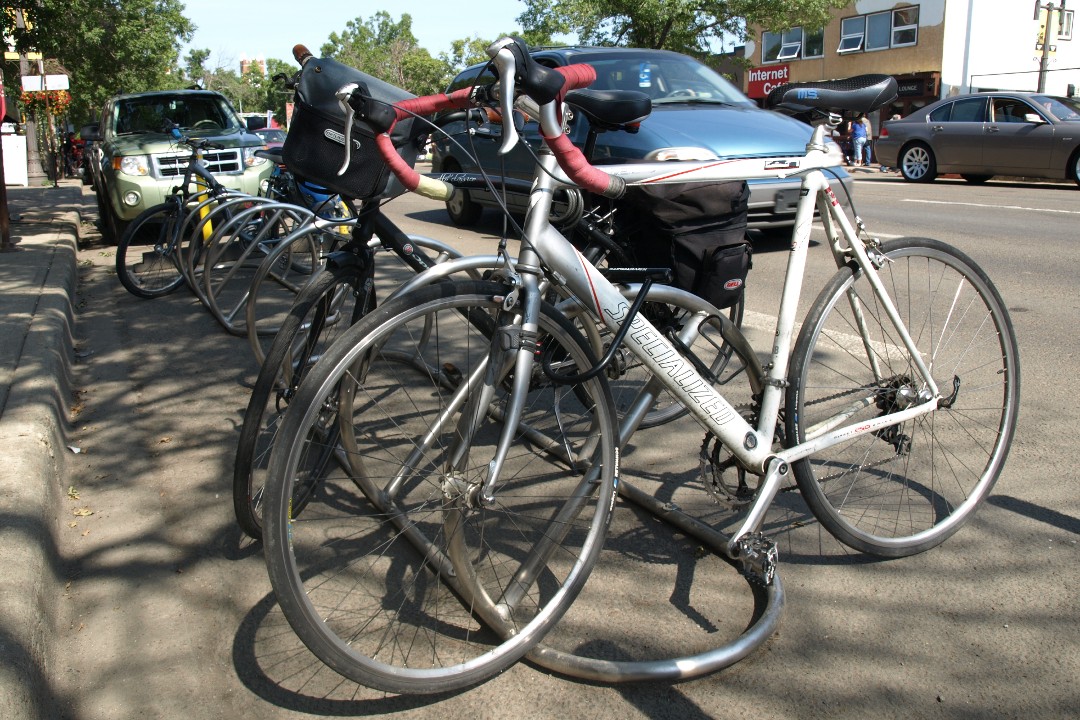The City of Edmonton has set aside $75,000 for schools and other organizations to improve bike parking, but some cyclists suggest challenges remain to feel safe riding to those new spots.
"This project is one of many initiatives underway to support improved end-of-trip facilities for cycling," Shewkar Ibrahim, the city's director of traffic operations for parks and road services, told Taproot in an email.
Ibrahim said consultation with Edmonton Public Schools, Edmonton Catholic Schools, and other organizations informed the new program, and that it will complement new zoning regulations that came into force in January, which regulate how bike parking must be built.
"The feedback received indicated that bike theft prevents some students from riding to school and many schools do not have funding to buy bike racks, so this program was designed to address those concerns," Ibrahim said. "We will monitor and modify the program based on feedback as well as the number of applications that we receive."
The new program will see the city award grants of $500 to $15,000 to schools and organizations to improve bike parking, as well as to widen, improve, or build pathways. Ibrahim said the city's overall budget for bike parking is $1 million, pulled directly from the $100 million city council agreed to invest in active transportation in 2022.
While Treena Gish and her teenage daughter are the perfect target market for the new program, Gish said improved parking will alleviate only one of several challenges affecting her daughter's ability to bike from their home in King Edward Park to a high school in Queen Alexandra, starting in September.
On a recent test ride to help her daughter build confidence to ride to school (saving time over using transit), Gish noted there were racks at the school, "but they weren't in particularly good shape," she said. There were also signs that warned people to lock both bike wheels to the frame, which Gish said signals theft will be an ever-present concern. "If you're worried if your bike is going to get stolen, you won't ride to school."
But Gish said the larger challenge for her family is not bike parking at the school — it's the trip one must take to get to it. Indeed, though a large portion of the route is in dedicated and protected lanes, the test ride revealed that drivers often ignore signage and other cues. One even drove westbound in the bike lane as Gish and her family cycled eastbound in front of the Old Strathcona Farmers' Market.
"They just came straight through and right towards us on the bike lane," Gish said. "They weren't going particularly fast, but they were clearly right on the lane. I was in front. I waved at them. The driver turned onto the road, then they were going the wrong direction because (83 Avenue) is a one-way street. My kids were freaked out. My daughter said, 'If I was by myself, that car would have hit me.'"
Gish said the experience was a lesson in what's possible with infrastructure and what still needs to be done with habits. "At some point, you can't engineer out every bad driver," she said. "It's like squeezing bike lanes into areas designed for cars. It's not bike-first."
In February, Taproot reported that the city will build 10 bike routes in 2024 as part of the $100 million investment, but these routes will cover just 17 kilometres. The Bike Plan calls for hundreds more kilometres of protected lanes for cyclists to help reach the City Plan's goal to see half of all trips made by transit or active transportation.

